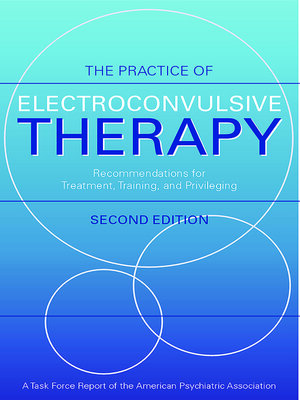The Practice of Electroconvulsive Therapy
ebook ∣ Recommendations for Treatment, Training, and Privileging (A Task Force Report of the American Psychiatric Association)

Sign up to save your library
With an OverDrive account, you can save your favorite libraries for at-a-glance information about availability. Find out more about OverDrive accounts.
Find this title in Libby, the library reading app by OverDrive.



Search for a digital library with this title
Title found at these libraries:
| Library Name | Distance |
|---|---|
| Loading... |
Two decades of advances related to electroconvulsive therapy (ECT) prompted the American Psychiatric Association Task Force on Electroconvulsive Therapy to update the recommendations for its use. This volume is the result of that work.
This third edition of The Practice of Electroconvulsive Therapy—the first since 2001—captures the body of knowledge on the safety, efficacy, and practice of ECT accumulated over the past 20 years, including more than 1,100 new literature citations. New features of this book include
Like its predecessors, this edition provides comprehensive information on staffing, assessment, and preparation for ECT; informed consent; anesthestic management; stimulus electrode placement; electrical stimulus parameters and dosing; seizure monitoring; and much more. The use of ECT in special circumstances—including in patients with catatonia, in children and adolescents, and during pregnancy—is also discussed.
With detailed information on concurrent medications and medical comorbidities that may require modifications to treatment, as well as indications for the use of ECT, this book is an indispensable guide to state-of-the-art ECT practice.







